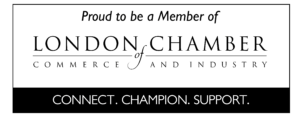8 Top Tips For Building Your Branding
Here are some simple steps when trying to define and build your brand:
1. Defining your brand
To define your brand ask yourself some questions. What is the product or service your business offers? What is the space in the general market it occupies? What need do you answer for your customers? Why does it matter?
Then think about how you do what you do? What does your business culture look like? Your brand character should flow from your business culture – the specifics and the unique aspects of how you do business. It should connect with your customer base and most importantly it should differentiate you in the marketplace.
2. When building your brand it can help to think of it as a person
We are all unique individuals. Our character is made of beliefs, values and purposes that define who we are, what we care about and who we connect with. Which determine how we behave in any given situation – even how we dress and the very words we say. Of course, as individuals, we rarely even consider what our own character is, Or how we portray it to the wider-world … we just ‘are’, we just ‘be’.
But when you’re building a brand it’s vital to have an underpinning understanding of the brands’ persona. Who you are.
3. What is driving your business?
What is the reason you get up for work in the morning? Why are you doing what you do? What does your brand believe in? These questions can help establish your brand positioning and inform the identity and character of brand communications.
4. Play the long game
Long-term relationships with your customers is one of the key hallmarks of a strong brand.
Create trust with honest branding – be clear about who your company is and be true to the values that drive it every day. Don’t dress up your offering and raise expectations. Don’t try to twist who you are to attract different customers, that just results in broken promises and unhappy customers who feel they have been lied to and that you are not authentic.
If you can create loyal customers, by delivering on your promises and meeting their expectations over a long period, then your customers will become brand evangelists and that means they will refer and promote you without a second thought.
5. Speak with a consistent tone of voice
Consistency does not mean boring. However, consistency will help reinforce the business’s character and clarify its offering, so customers are aware of exactly what to expect from the product or service. The tone of voice and the choice of words used can be hugely effective for consistent brand positioning.
6. Be innovative, bold and daring – stand for something you believe in
Big brands are like oil tankers – they take ages to change direction hindered by layers of bureaucracy that prevents them from being flexible. Unable to react to the ever-changing needs of their customers in the fast pace of the modern business world.
This all hands an advantage to the small, agile companies.
But even the big brands with long trading histories have realised that ‘staid and boring’ is rarely an engagement driver for customers – there can be exceptions like financial securities and insurance companies – but even these arenas have seen disruptive, young upstarts shaking up the expected norms of their particular business arenas.
7. Brand communication is a two-way street
Note: Your brand is not totally under your control.
In fact, with modern communications methods, it’s less in your own hands than it is in the hands of your customers.
How people feel about your brand, and what they say about you on social media, will be far more impactful than anything you say in your own marketing. It’s their ‘gut feeling’ that counts most.
A bad experience or review can travel the world in seconds. Modern brands know that it’s all about managing the relationship with your customers – doing everything you can to have a reputation that fully aligns with everything you do and say. You can’t claim to be green and make a big fuss about planting a ‘living roof’ at your HQ if the next news cycle (or a quick Google search) then tells me you are involved in cutting down the rainforests, or have product packaging that can’t be recycled.
8. Stamping your logo on everything doesn’t work anymore
It used to be the corporate way – get our logo out there, on everything you do, as big as possible. But people are more cynical these days. They like to be involved in the brand conversation and not simply force-fed. Brand building in the modern world is a collaborative process, a conversation if you like, between the brand and their audience.
The future of brand management is fluidity and engagement. Respect your customers’ intelligence. Generate some intrigue and allow them to discover things about your brand for themselves. This is the best way to foster brand ambassadors who will revel in telling other people about you.
It’s not a new concept, the success of viral marketing is based on these same human motivations.
We like to discover things – we like to be the first to tell others a new bit of news (or gossip) or introduce people to a new band, restaurant, food, etc. We like to feel we have influence. And the truth is, in today’s world, the customer holds more of the cards than they ever have before.






